This shrimp gumbo has a buttery roux, big shrimp, a very flavorful broth, and a rainbow of vegetables. I’m sure you’ll love it. Like all of the recipes here, we made it as simple and as flavorful as possible.
Maximizing Flavor: The Best Time to Add Shrimp to Your Gumbo
As a Louisiana native, gumbo is hands down one of my favorite comfort foods. That rich, deeply flavorful broth loaded with vegetables, smoked meat, and tender shrimp is the ultimate one-pot meal. But as any gumbo aficionado knows, timing is everything when it comes to getting the flavors just right. So when exactly should you add the shrimp to your gumbo?
In this article, I’ll share my tips as a seasoned home cook on the ideal time to add shrimp to your gumbo to maximize both texture and flavor. You’ll learn the keys to layering flavors during cooking and how to avoid overcooking the shrimp. Let’s break down the art and science of shrimp gumbo perfection!
The Importance of Building Flavor in Gumbo
First, it helps to understand why layering ingredients in stages is so critical for gumbo. Gumbo gets its signature depth of flavor from:
- A long simmering time to meld spices and develop richness
- An array of aromatic vegetables like the holy trinity – onion, celery, and bell pepper
- Smoked andouille sausage and other bold seasoning components
- A toasted roux for nutty flavor and thickness
You want time for the broth to absorb all that incredible flavor as it bubbles away. Adding the shrimp too early robs them of soaking up the full complexity of the gumbo. Their delicate texture also starts to break down with prolonged cooking.
The Art of Adding Shrimp at the Right Time
Taking all of this into account, I recommend adding the shrimp during the last 20-30 minutes of cooking time. This provides a sufficient window for the shrimp to absorb flavor without overcooking. Some key tips:
-
Wait until the roux vegetables and sausage have simmered for at least 1 hour before adding shrimp.
-
Stir in peeled, deveined shrimp and cook for 15-20 minutes until pink and opaque.
-
For extra insurance, add raw shrimp on top to poach in the broth for 5-10 final minutes.
I like to maintain a ratio of around 1 pound of medium shrimp per 4 servings of gumbo. Resist tossing in a huge shrimp overload that can throw off the flavor balance.
Signs Your Shrimp is Over or Undercooked
To know your shrimp is cooked to tender perfection, look for these signs:
Properly Cooked Shrimp:
- Firm and opaque in appearance
- Flakes apart with gentle pressure
- Warm and juicy inside when bitten
Undercooked Shrimp:
- Translucent appearance
- Rubbery, gummy texture
- Cool or gritty inside
Overcooked Shrimp:
- Tough, chewy texture
- Dry, shriveled look
- Loss of plumpness and moisture
Remove shrimp at the first sight of overcooking to avoid ruining the tender texture. Shrimp overcooked in gumbo can take on an unpleasant rubbery quality.
Putting it All Together: My Step-By-Step Method
To highlight the shrimp addition process, here’s a quick rundown of my own gumbo technique:
- Prepare the roux and holy trinity aromatics – simmer 30 minutes
- Add smoked sausage and continue simmering 30 more minutes
- Stir in chopped okra and stew for 15 minutes (optional but delicious!)
- Add raw shrimp and stew 10 minutes
- Top with a few extra raw shrimp and cook 5 final minutes
- Adjust seasoning and serve over rice
This gradual build up lets the smoky, robust flavors develop fully before the shrimp enter the scene. The shrimp then soak up flavor as they gently poach without overcooking.
Sample Dish: Easy Shrimp & Sausage Gumbo
To see this shrimp timing in action, check out this straightforward shrimp and sausage gumbo recipe. It puts all the tips above into a simple, weeknight-friendly gumbo you can easily recreate at home.
The step-by-step instructions walk you through building bold flavor in stages before finishing with perfect shrimp texture. You’ll end up with a hearty, soul-warming gumbo brimming with succulent shrimp flavor.
Putting It All Together
Adding shrimp at the right moment is key to gumbo glory. Allow plenty of time for the complex flavors to meld and build before sliding in the shrimp to finish. With 20-30 minutes to steep and poach, the shrimp will soak up delicious flavor while retaining their tender charm. Just resist tossing in the shrimp too early or too late. With the proper timing, your gumbo will be chock-full of juicy, plump shrimp goodness in every soul-warming spoonful.
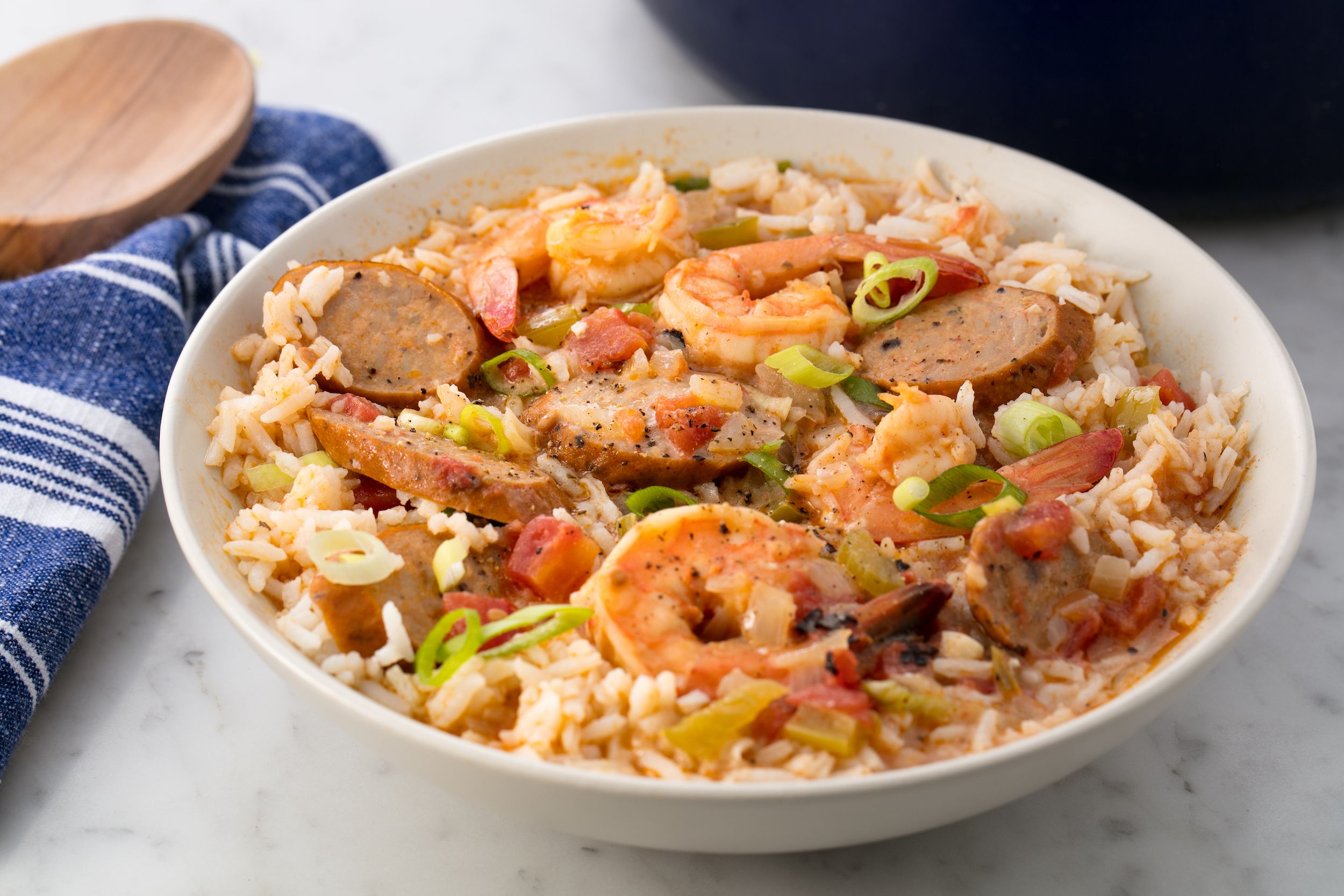
How thick should gumbo be?
Gumbo is generally pretty thick – it should be more stew-like in consistency than soup-like. It is very important to make the roux very thick because that will help get the gumbo to the right consistency.
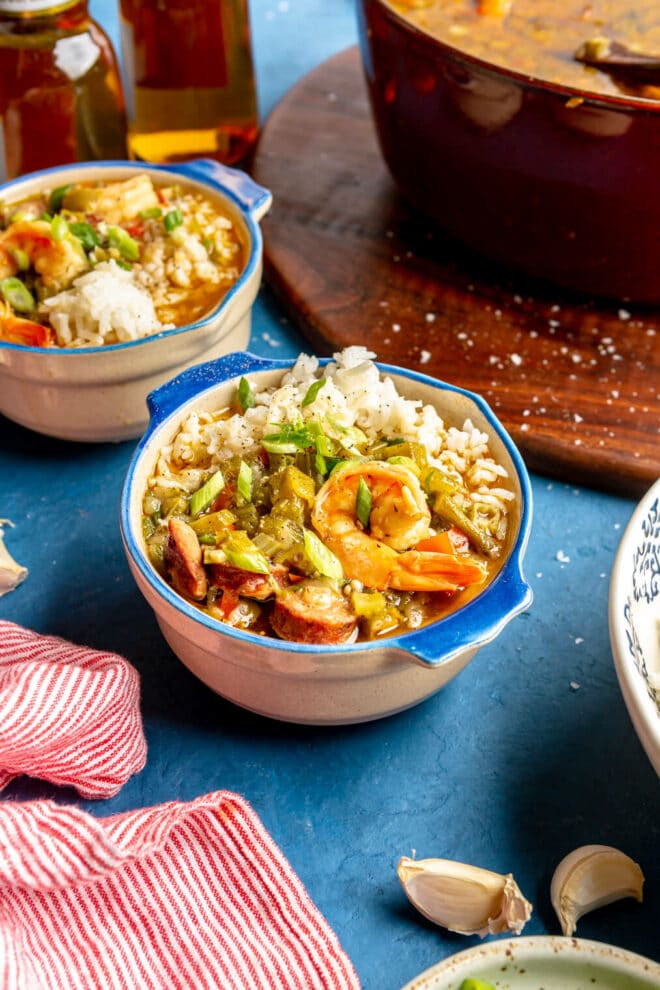
How to Make Shrimp Gumbo with Sausage
As we already said, making gumbo is a labor of love—it’s not quite a “quick and easy weeknight meal.” But while the process takes about 2 5 hours, it isn’t actually super difficult to make. You’ve got this!.

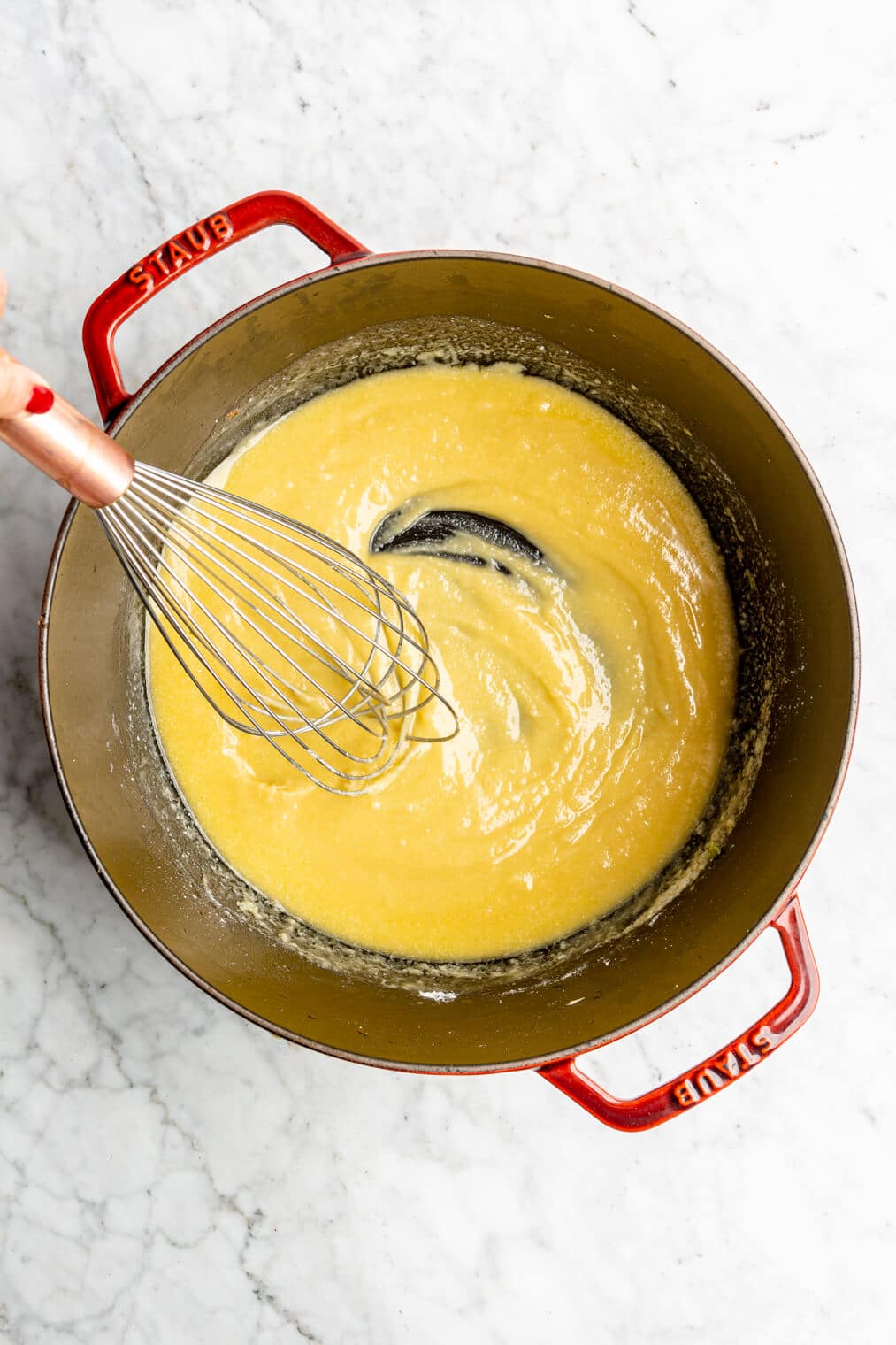

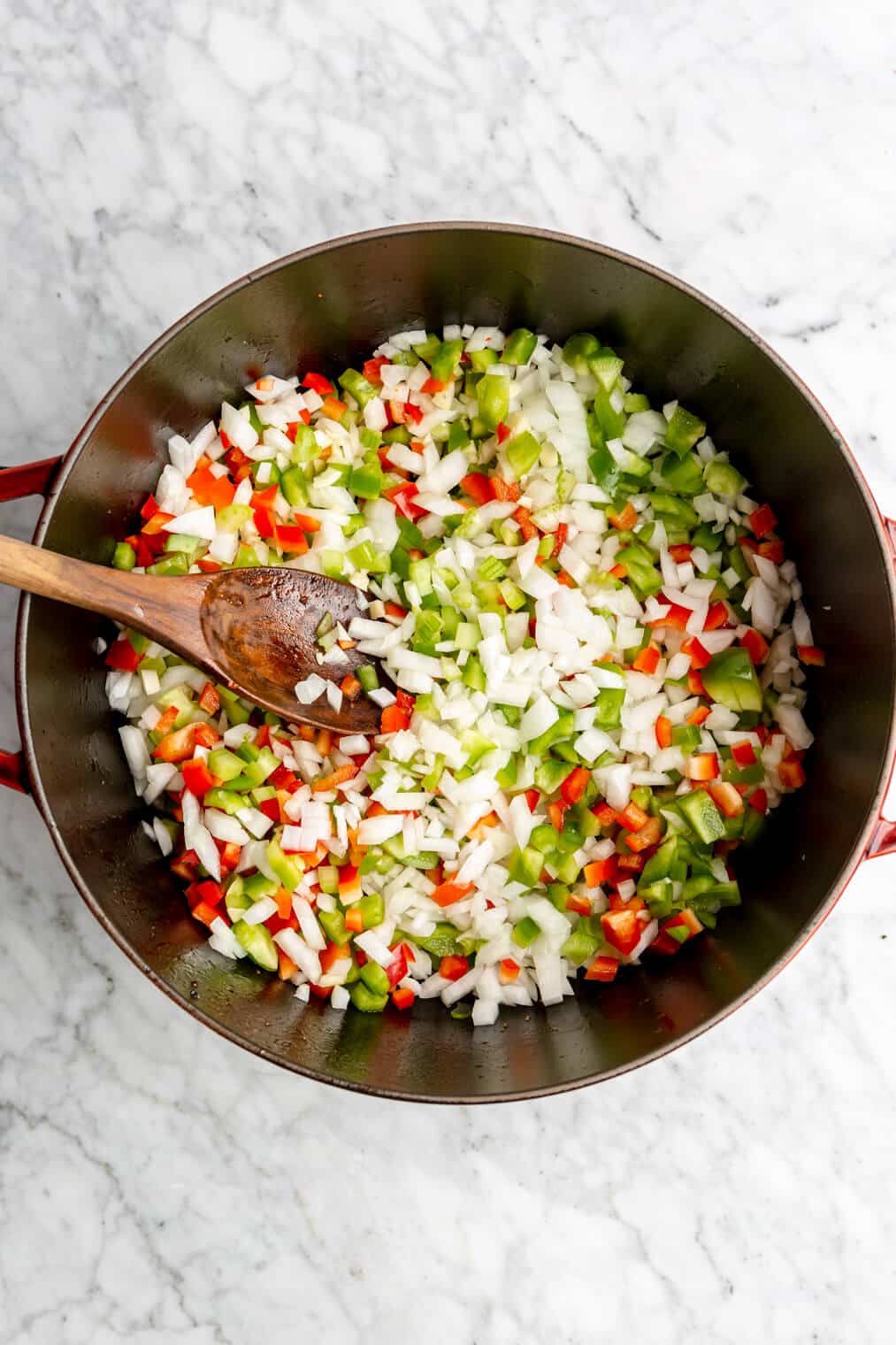
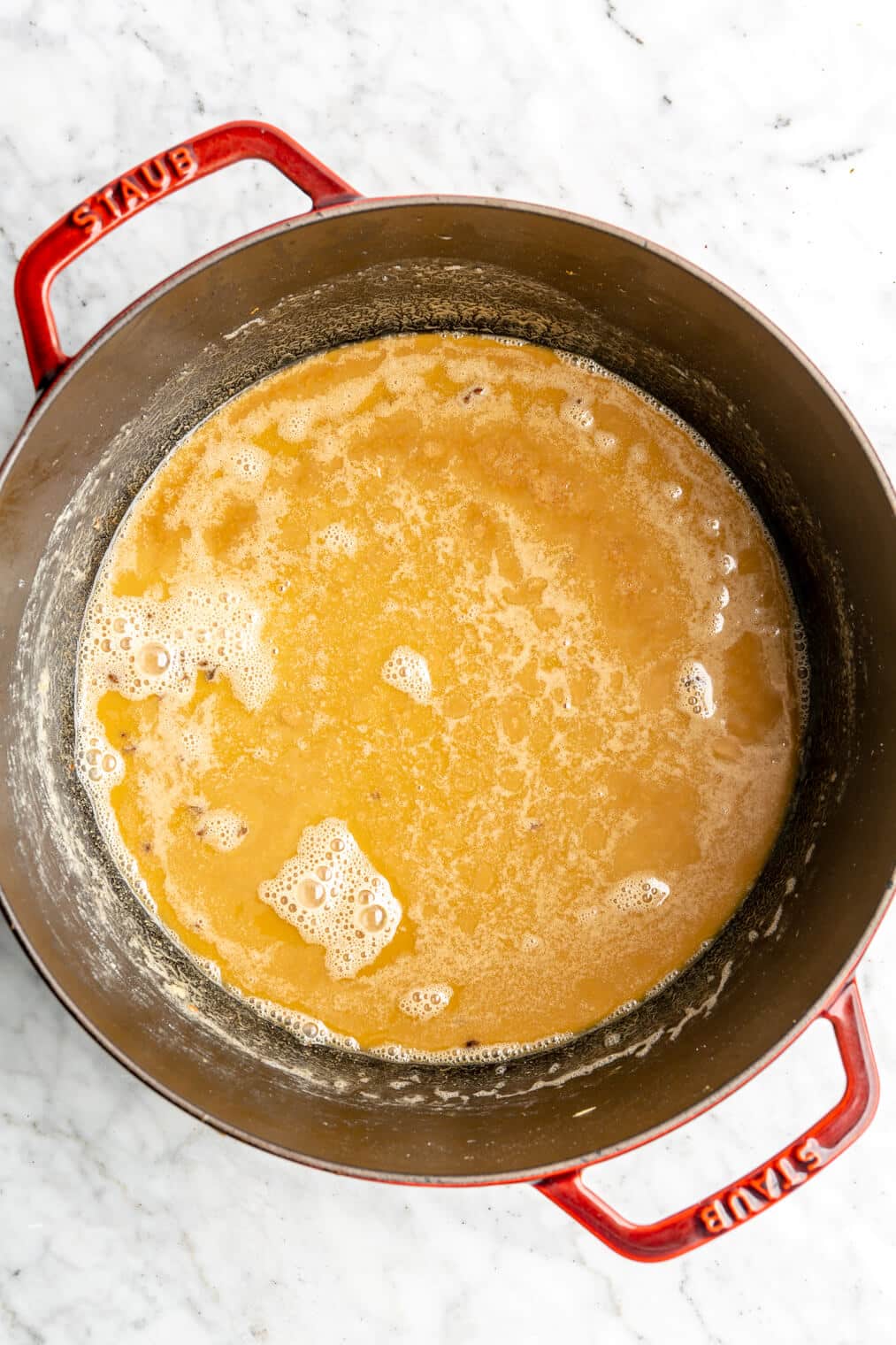

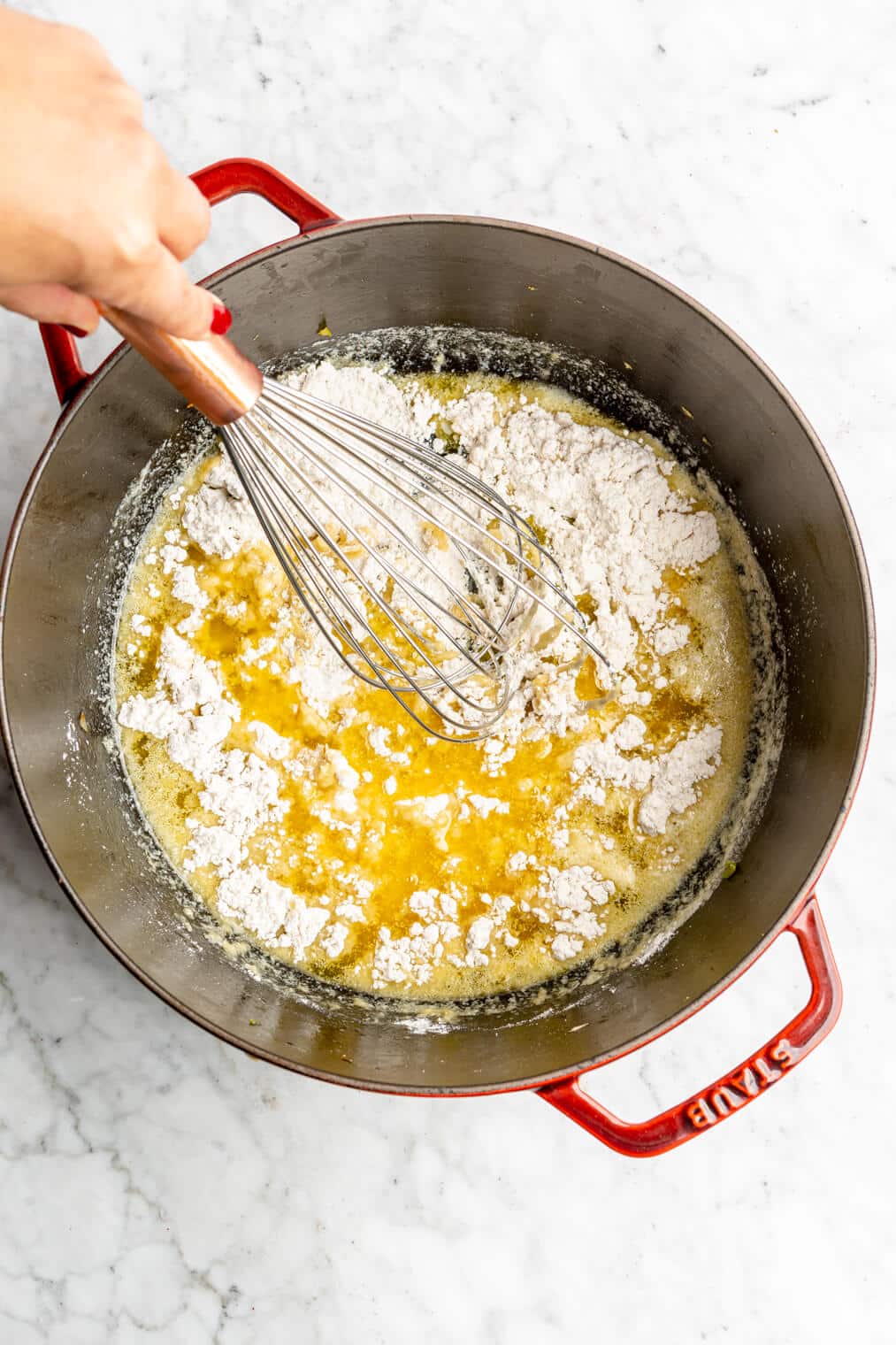
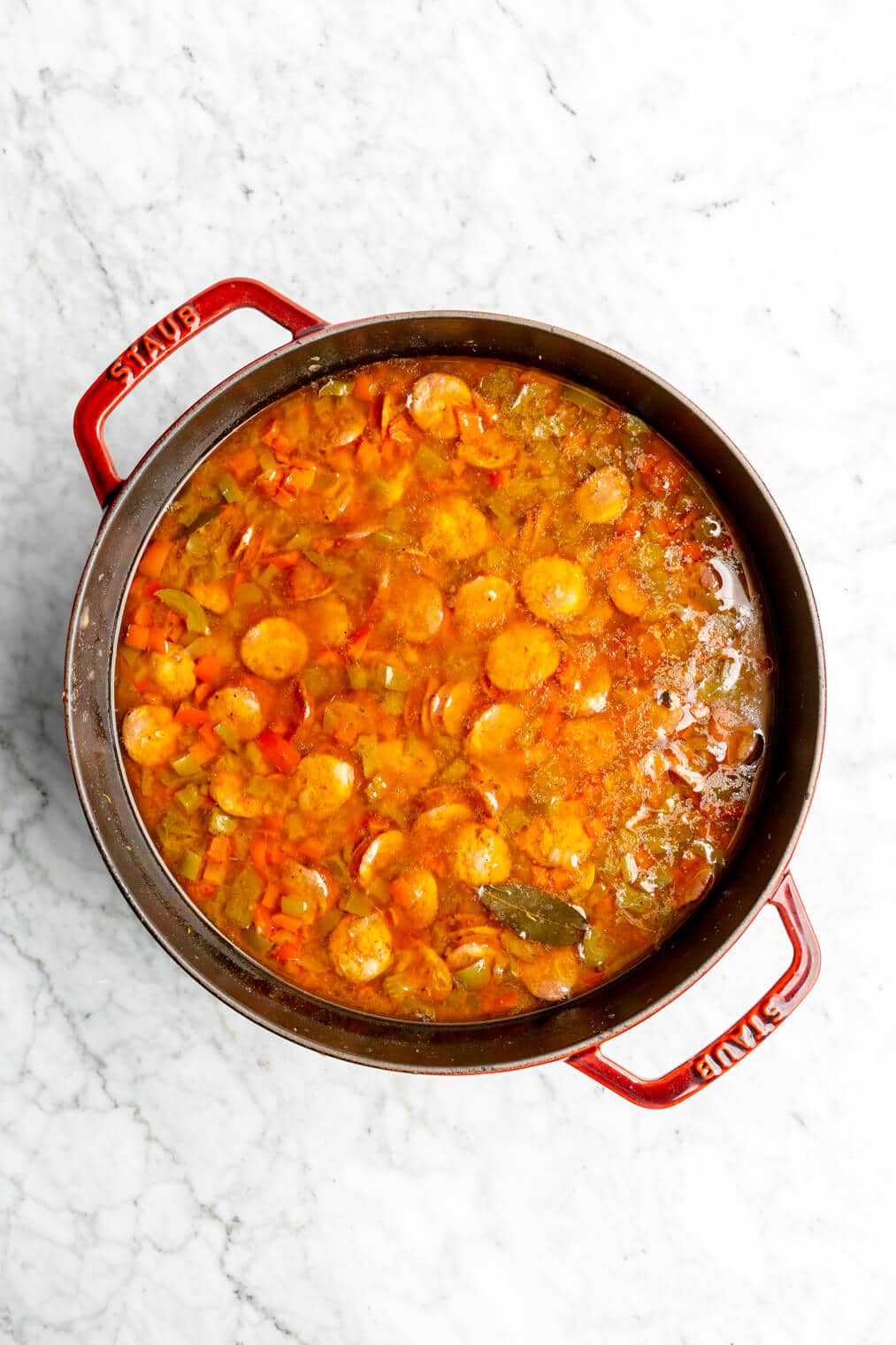
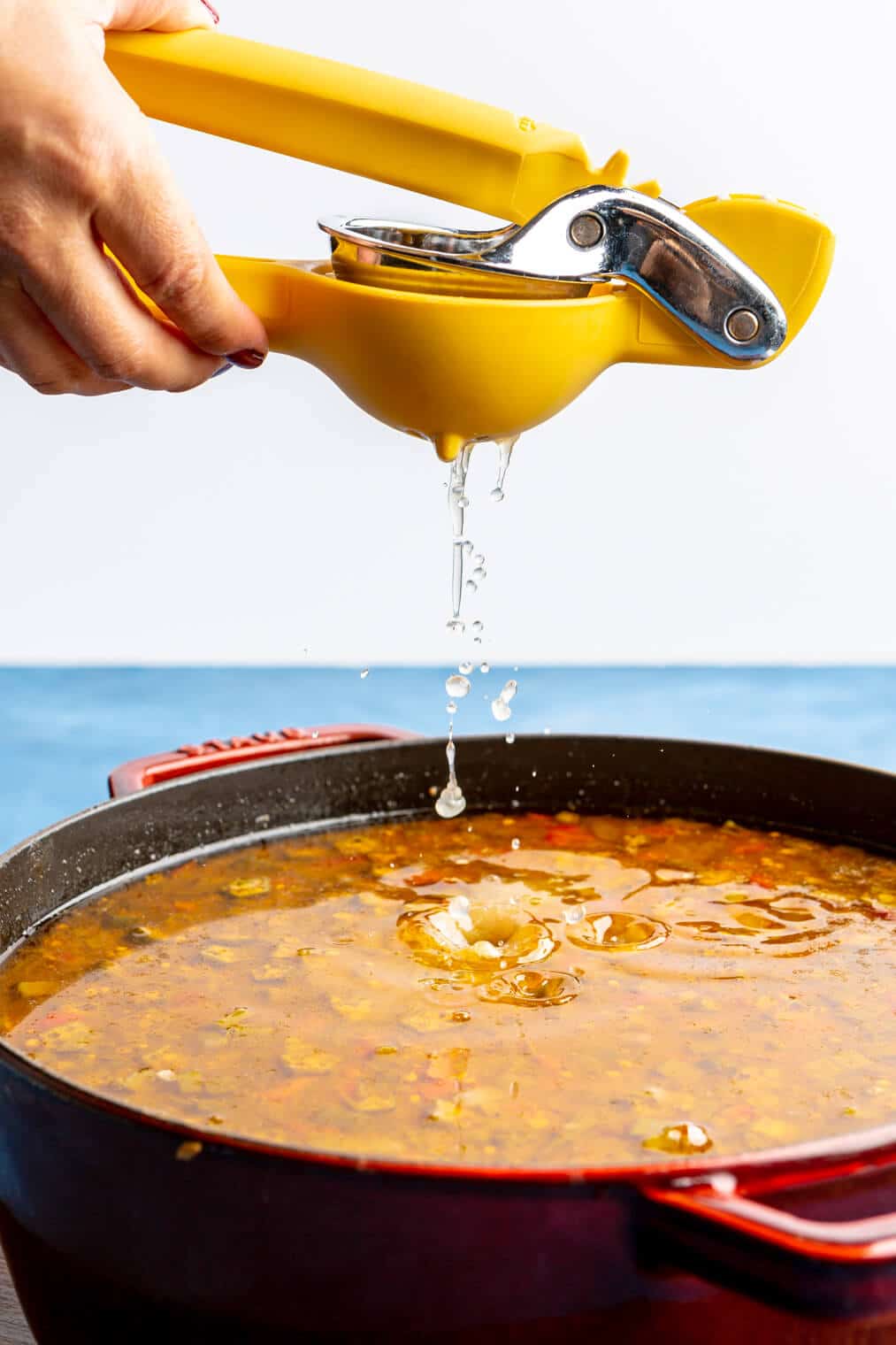
- Add two tablespoons of olive oil or butter (we used butter!) to a large stock pot with a heavy bottom and set it over medium-high heat. Brown the sausage. Put the sliced sausage in the pot and cook for two minutes, until it turns brown. Then flip the sausage over and cook for one to two more minutes. Remove the sausage from the pot.
- Remove all but two tablespoons of oil from the pot and turn down the heat to medium. Saute the onion, garlic, celery, and bell pepper. Put the celery, onion, bell pepper, garlic, salt, and onion in the pot. Let it cook for 5 to 7 minutes, or until the onion is clear and the bell pepper and celery begin to wilt. Remove the vegetables from the pot and set aside.
- To make the roux, heat a pot over medium-low heat and add 1 cup of butter or olive oil (we used butter!). Once it’s warm (about one minute), add the flour and mix the two with a whisk. Stir the mixture for another 12 to 15 minutes, or until the roux turns peanut butter color and smells nutty. (Note that the roux may turn brown right away from mixing with the browned bits in the pot. But as it cooks, it will continue to get darker and smell better.) ).
- Put the seafood stock into the roux and let it simmer. Make sure there are no lumps by whisking the roux constantly. After that, add the vegetables, Cajun spice mix, bay leaves, black pepper, and leaves. Over medium-high heat, bring the gumbo to a boil. Then, cover it and turn down the heat to low. Cook for one hour.
- Add the okra and shrimp. Put the okra and shrimp in the pot, cover, and cook for another 30 minutes, until the okra is soft and not stringy.
- Add the green onions and lemon juice. After 30 minutes, skim off any extra fat from the top of the pot and add the green onions and lemon juice. Then, check the seasoning and add more salt or Cajun seasoning if needed.
- Serve and enjoy – serve alongside white rice and enjoy!
Seafood Gumbo | CHEF CARMEN ATL
How do you cook shrimp gumbo?
Uncover the pot, and stir in the shrimp, okra, green onions and tomato. Return the gumbo to a boil, then reduce the heat to a simmer. Cover and cook until shrimp turn pink, about 10 minutes. Stir in the file powder. Serve with rice. Editor’s Tip: Shrimp can be finicky to cook just right.
What is the secret to shrimp gumbo?
Flour and oil: As mentioned above, roux is the secret to our shrimp gumbo recipe. It’s also one of the best ways to thicken sauce and stews. While roux is often made with flour and butter, most Creole and Cajun gumbo recipes opt for flour and canola oil.
Is shrimp gumbo a Creole recipe?
This authentic shrimp gumbo is full of flavor, inspired by a true New Orleans gumbo. With andouille sausage and plenty of tender shrimp, this Creole recipe is the real deal. Perfect for Mardi Gras, or anytime you’re craving Louisiana fare! Easy to make Whole30.
How long does it take to cook gumbo?
It takes about 10 minutes to cook the roux, which is the base of every good gumbo. Gumbo is also served with rice on the side, while jambalaya simmers it in the dish. The secret to the best gumbo: the roux. In this recipe, we cook the roux until it has a golden color.
